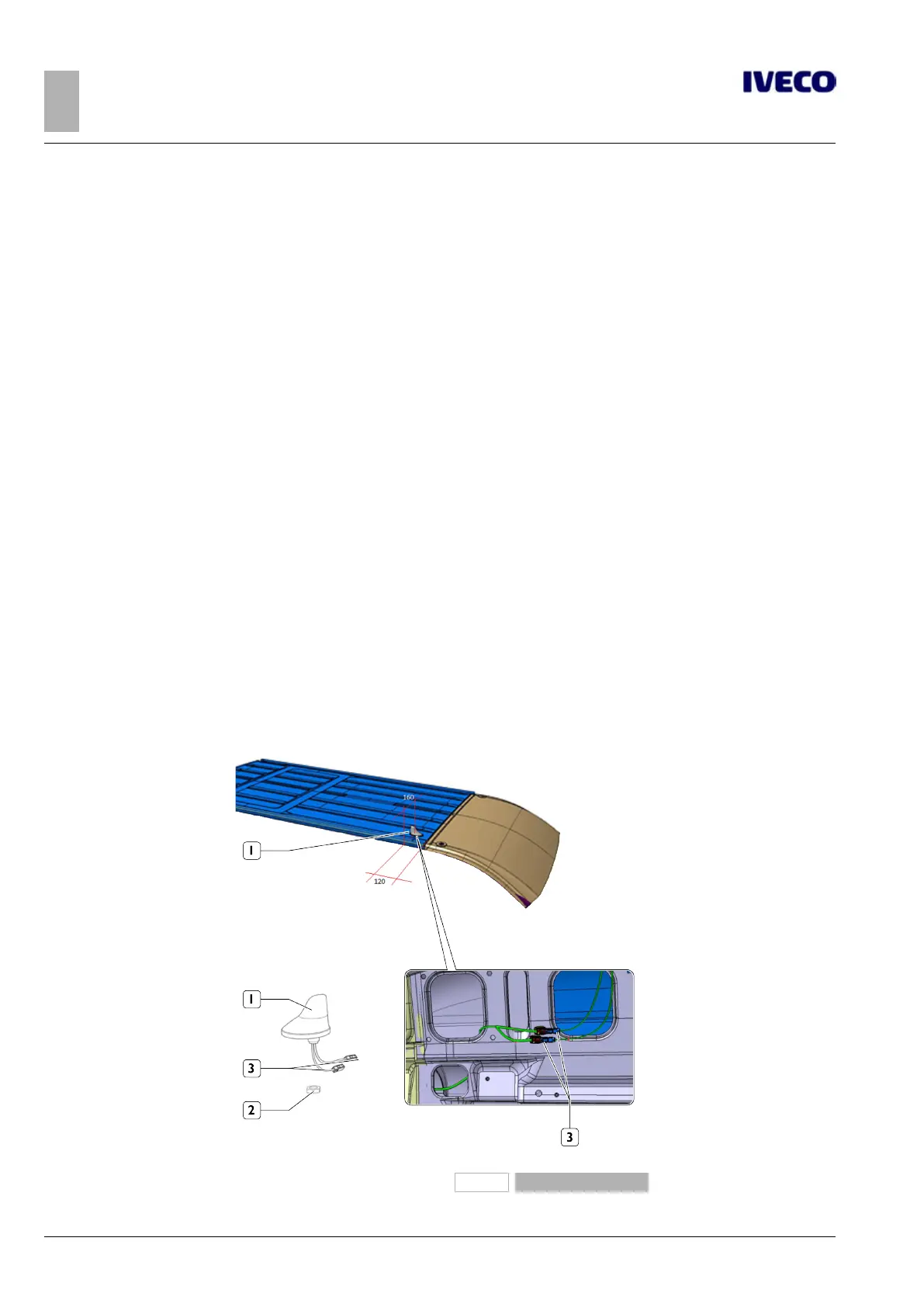32
DAILY 4x4 ‒ GUIDELINES FOR BODYBUILDERS
ELECTRONIC SUB-SYSTEMS
5.5 RECEIVER-TRANSMISSION SYSTEMS
– Printed 692.68.999 – 3 Ed. - Base 08-2020
5.5.3 GPS receiver and satellite navigation units
Install the transmitting part in a flat, dry area, separate from the electronic components of the vehicle, away from humidity and
vibrations. In the case of a pulse transmission system, it must be at a distance of at least 1 meter away from other devices.
The GPS antenna must be installed so as to have the maximum visibility possible of the sky.
In fact, as the signals received from the satellite are at very low power (approximately 136 dBm), almost any obstacle can influence
the quality and performance of the receiver.
The following should therefore be guaranteed:
● an absolute minimum angle of vision of the sky of 90°
● a distance no less than 30 cm from any other antenna
● a horizontal position and never underneath any metal which makes up part of the cab structure.
Moreover:
● the ROS value (Stationary Wave Ratio) must be as close as possible to the unit (the recommended value is 1.5), while the
maximum must never be greater than 2 in the GPS frequency range (1575.42 ± 1.023 MHz).
● the ANTENNA GAIN values must be as high as possible and guarantee a sufficient level of spatial uniformity, characterised by
deviations in relation to the average value to the order of 1.5 dB in the 1575.42 ± 1.023 MHz band.
5.5.4 Radio installation
Refer to the information contained in the Use and Maintenance Manual
5.5.5 Toll collect
256580
Figure 33

